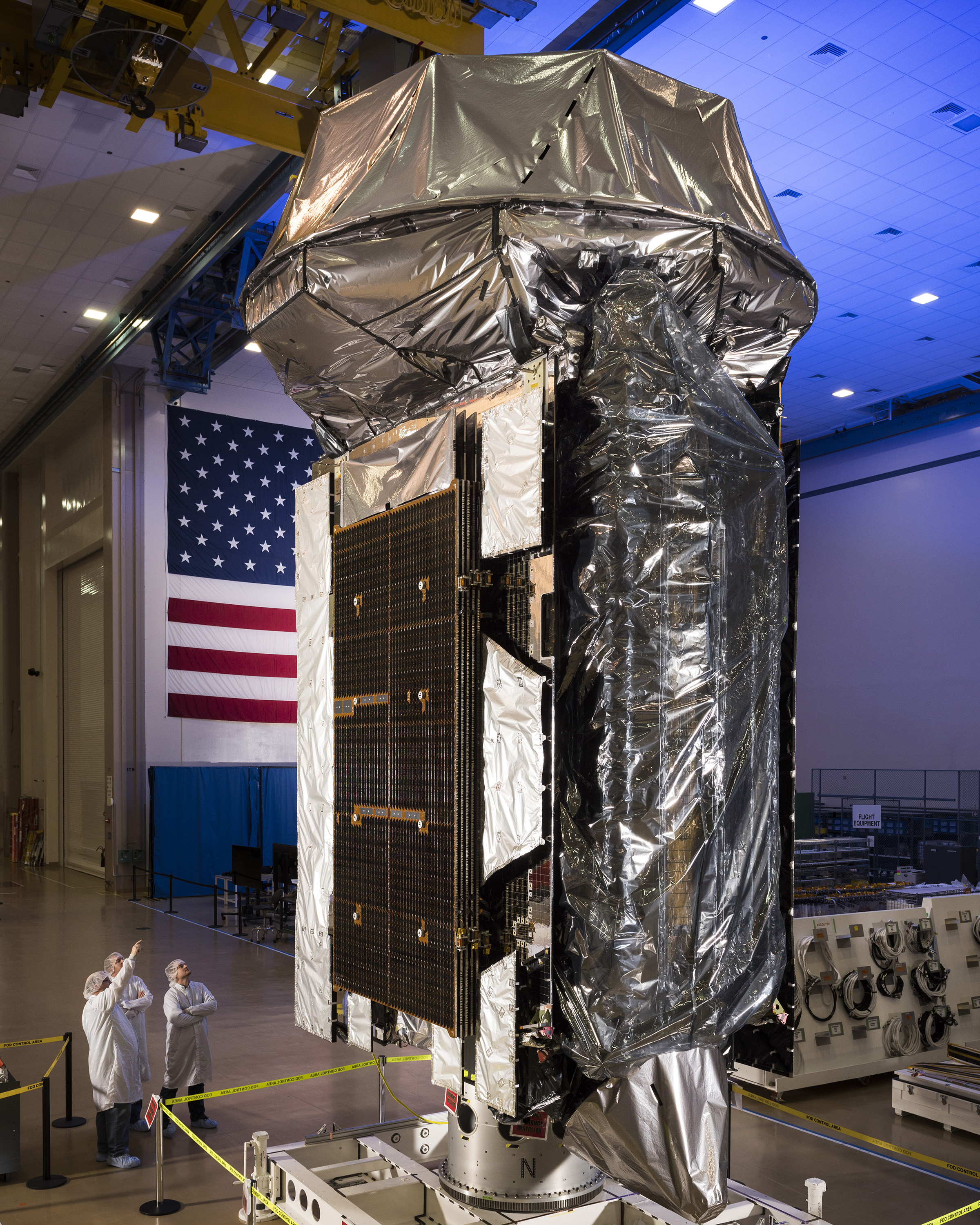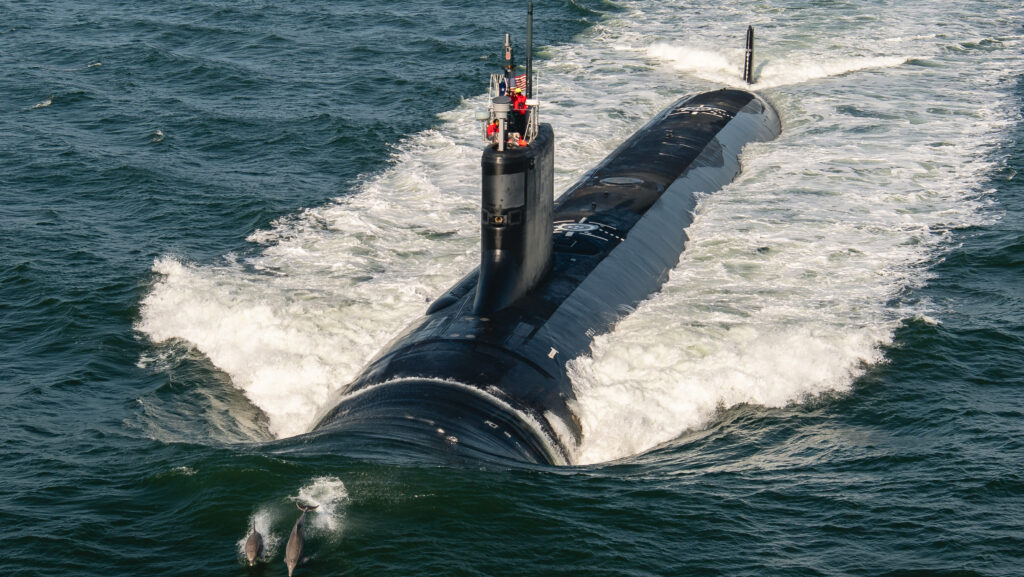
The Navy is preparing to launch the last satellite in its new constellation that will provide a massive increase in secure, high-quality and high-volume voice and data communications with nearly worldwide coverage, designed for mobile users with hand-held devices but available to joint forces on ships and in aircraft and ground vehicles.
The fifth of the Mobile Users Objective Systems (MUOS) satellites will be launched Friday from Cape Canaveral, Fla., aboard a powerful ATLAS V launch vehicle, service and industry officials announced today.
MUOS-5, like the four satellites in orbit, will carry two payloads in a single spacecraft. One will provide new Wideband Code Division Multiple Access (WCDMA) waveforms with greater capabilities, and one that supports the legacy Ultra High Frequency (UHF) communications systems in wide use among U.S. and international militaries and civil aviation.
In the new satellite, however, only the UHF system will be activated. The wideband function will provide “the assurance of a spare in case anything happens to one of the other satellites,” Capt. Joe Kan, the Navy’s MUOS program manager, told reporters.
In addition to the five satellites, the MUOS contract with an industry team led by Lockheed Martin also includes four large ground stations in Australia, Italy, Hawaii and the eastern U.S.; the WCDMA waveform; the receiving terminals; and the software to manage the systems.
The contract value is “$7 billion-plus” for development, production and sustainment of the network for 20 years, Kan said in a telephone conference call from Cape Canaveral.
Mark Woempner, Lockheed program manager, said MUOS “is a game-changer,” enabling beyond-line-of-sight communications via satellite, with connection to line-of-sight radios, providing access to the military’s global information grid.
Users will have “crystal-clear voice,” video and “mission imagery” on a high-speed Internet system accessible to both the NIPRNet secure network used for mainly unclassified communications and the restrictive SIPRNet channel for highly classified material, Woempner said
It will provide communications in “challenging terrain,” including under trees, and will extend higher into Arctic regions than any existing system, he said.
Although development of the MUOS network is funded and managed by the Navy, operation of the satellites in orbit is done by the Air Force. And it is used by all four U.S. military services and the Coast Guard and can be provided to close allied nations.
The ATLAS V launch will be conducted by the United Launch Alliance of Boeing and Lockheed Martin Space Systems.
Although the UHF service is fully operational, the WCDMA functions will become available after completion of testing and certification of the systems, including the ground stations. The station in Italy currently is off line due to a protest by residents near its location in Sicily. A court hearing on the protest is scheduled for next month.
Asked about any future programs, Kan said the Navy was “looking forward to delivering” the WCDMA capability, probably by the end of this year.
Beyond that, the Navy is looking forward to a follow-on program, he said. An analysis of alternatives for a future system is not expected to start until 2018.




